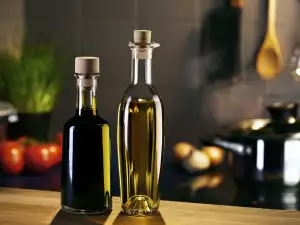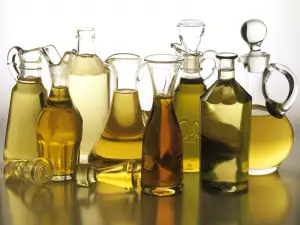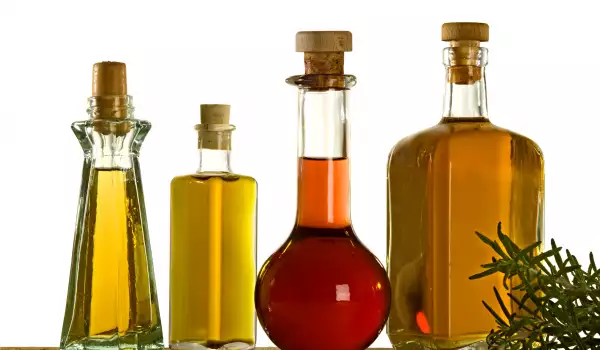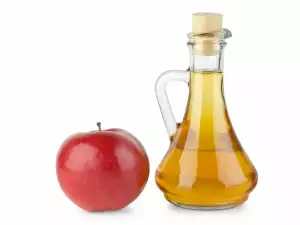Vinegar is one of the oldest food seasonings that mankind knows. Well known are the health effects of apple cider vinegar, made from fresh apple or the traditional Balsam vinegar. Vinegar is widely used in cooking as well as flavoring, and the cosmetic and health industries make use of it too. Quality vinegar makes many dishes and culinary delights. It is used mostly for flavoring salads, for cooking sauces and marinades for making pickles.
In essence, vinegar is an acidic liquid to the taste. It is produced during the oxidation of ethanol in wine, beer, fermented fruit juice, or nearly any other liquid containing alcohol. Vinegar is produced by certain bacteria that work in sugar water solutions without intermediate conversion to ethanol.
History of vinegar
For hundreds of years people have used vinegar as medicine, cosmetics and good helper in the kitchen. It was known to people already 10 000 years ago. It was about five millennia BC that apple cider vinegar was being used extensively for medical and household use in Babylon. Our ancestors have used fermented fruits of palms, and in the resulting mixture soaked meat to extend its storage time.
In ancient Chinа, a prepared vinegar rice was used for medicinal and cosmetic purposes, while in Japan, it was even credited with miraculous power and thought that it was able to retain youth, health and strength one’s body. In India, they even widely applied vinegar to treat wounds, burns, bleeding, and even snakebites.
Hannibal found a most unexpected application of vinegar. It helped to make the transition through the Alps to Rome during the Punic Wars (218-201 BC). Warriors had to pass a very difficult and narrow path. By command of the Carthaginian military commander, soldiers chopped branches from the trees, lit the rocks around them, then sprayed the hot rocks with vinegar. Thus, the rocks become loose enough to be able to dig a path and pass.
In the Middle Ages, doctors visiting the sick of the plague, brought a bottle of vinegar with them, to disinfect their hands. In the early 20th century, American doctor FK Jarvis rediscovered healing properties in apple cider vinegar familiar to traditional medicine that uses vinegar as a treatment for various diseases. In 1958, he even published his book "Living 5 times in 20 years, " which describes at large, the unique healing properties of apple cider vinegar.

Composition of apple cider vinegar
93 different ingredients were found in the content of vinegar. They are very useful for a person by stimulating the body's vital functions. There are acetic, propionic, lactic and citric acids, enzymes, and a whole series of amino acids, dietary fiber as valuable potash pectin. Vinegar contains many enzymes, 20 essential minerals - potassium, sodium, magnesium, phosphorus, chlorine, sulfur, copper, iron, silicon, fluorine, many trace elements, like folic acid, pro-vitamin beta carotene, rutin or vitamin D, and a strong dose of vitamins A, B1, B2, B6, C and E. The pectin contained in apples, is characterized by the strong absorption and anti-inflammatory properties that apply to vinegar.
Application and useful properties of vinegar
There are many health benefits that vinegar offers the people. Vinegar has the ability to form a protective layer on the stomach lining, which makes it suitable for acute and chronic gastrointestinal diseases. In some clinics in the U.S. and Japan, apple cider vinegar is used in the treatment of gastritis and other gastrointestinal problems. It is used as a disinfectant in the hospital premises.
Decoction of slightly warm water, 1-2 tablespoons of vinegar and honey is very useful for the body. Also works better with a slightly warm cup of herbal tea, 1-2 teaspoons of vinegar and honey.
Vinegar is used in abdominal pain, nausea, vomiting, upset.
Experts say vinegar helps lowering the extra pounds, and based on its chemical forms much medication for weight loss is prepared. Vinegar improves metabolism and is an important factor in fat burning by providing all the vital substances in reducing diets. Losing weight by taking apple cider vinegar does not require fasting, or deprivation, sp there is no hunger due to being deprived, together with that excess fat melts away, while limiting the potential for disease.
Vinegar helps in the process of purification of the body and improves intestinal walls, while it destroys the putrefactive bacteria. It reduces deposits on the walls of blood vessels and significantly reduces the risk of heart attack because of its rich pectin content in combination with beta-carotene and reduces bad cholesterol.

In humans, vinegar maintains blood sugar within normal limits. It is a powerful tool against disease and enhances the body's resistance. It has a favorable effect on the kidneys, helps in the treatment of flu, sore throat, fever and headaches. Massages with vinegar relieve arthritic and rheumatic pain and act preventively against the decalcification of bones.
Vinegar is widely used as a beautifying agent. After washing your hair, exposing it to acetic water gives it a beautiful shine. Vinegar is good for massaging and applied in cosmetics and lotions for the face. Cleaning the skin with a swab of vinegar is useful and kills bacteria and germs. Apple cider vinegar can help remove stains from your teeth.
Vinegar has applications in the household - cleaning windows, lime and tiles. It helps to freshen, soften and preserve the color of the fabrics, carpets, clothes.
Technological production of vinegar
In today's vinegar production, there are two types of processes: traditional processes - the production of Balsamic vinegar, and open fermentation. In these processes, sugar and alcohol are turned into vinegar. Often, the surface forms acetic sludge. In the case of traditional Aceto Balsamico tradizionale di Modena, this process can take up to 12 years. In modern bio-reaction processes, in which acetic cultures are in equilibrium and the ventilation is via turbines or venturi nozzles from 1 to 5 days are needed to turn an alcoholic beverage into vinegar.
Recipes for homemade vinegar
Everyone at home can prepare vinegar. It takes only very sweet apples. They are washed, cleaned of stems, decayed and rotten parts. Do not peel, do not separate the core and seeds. Grind to a fine mush - the more fine, the better. Leave in a large warm pot for about 40 days. The barrel should not be tightly closed and can be covered with gauze or cheesecloth – it should have access to air. Every day, mix the apples.
The resulting mixture was filtered through cheesecloth and squeezed vinegar, leave it to stand for 30 to 40 days to settle. If you want to get a clear vinegar after precipitation, with a thin tube, extract only the clear part and pour into bottles. Most useful is the vinegar residue. Almost always, the process is accompanied by the formation of acetic sponge, resulting from the fermentation process. The longer the vinegar matures, the more acidic it is.
A second option for the preparation of vinegar is with honey and pure water. Prepare as above, except that the water sweetened with honey. Recipe is suitable for colder days or when sour apples are available. The standard recipe for vinegar has sugar because the sweetness of sugar helps the fermentation (bacteria are attracted to sweet). Those who want to limit sugar consumption can use honey, but it is best to make vinegar from sweet apples.




















